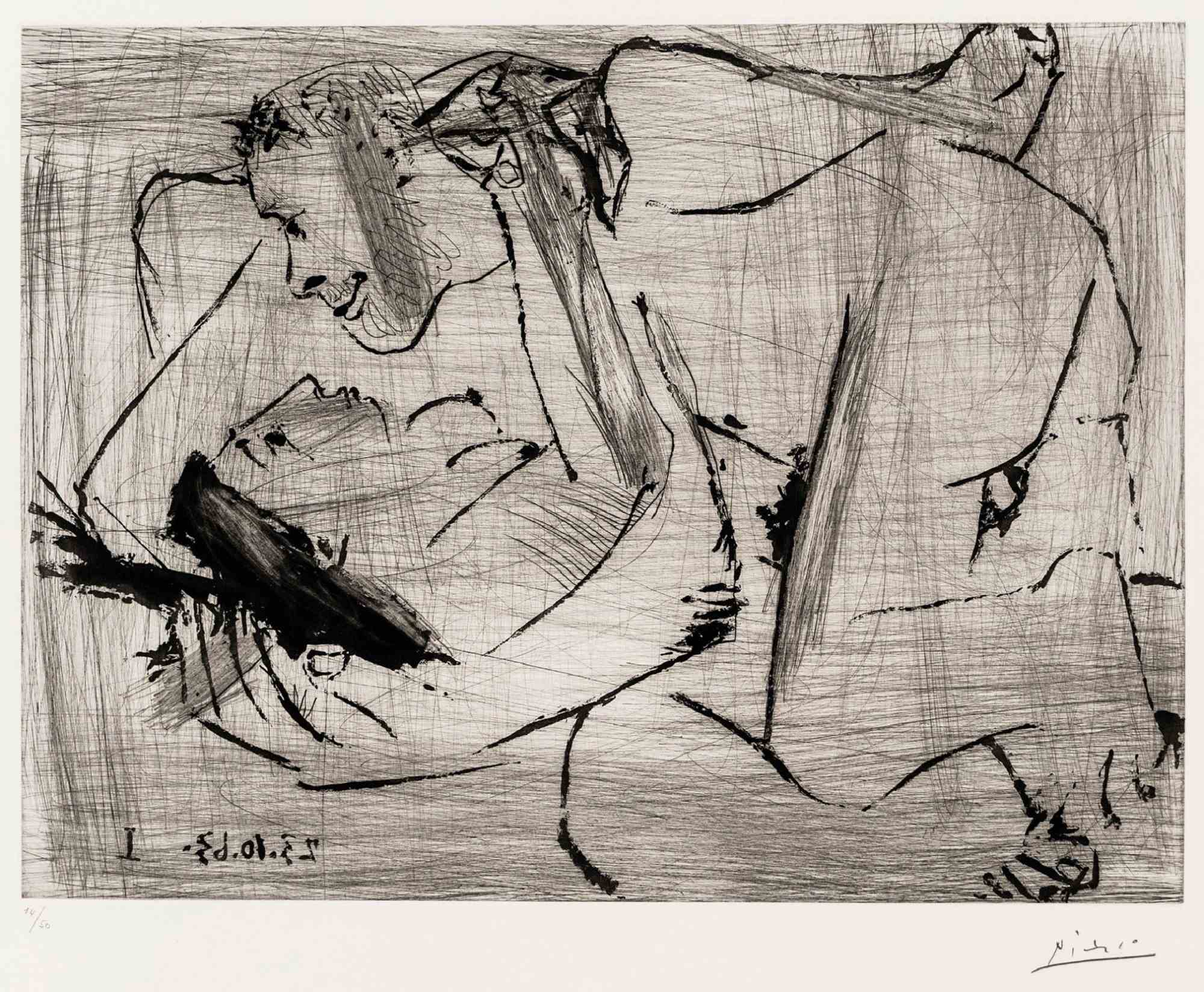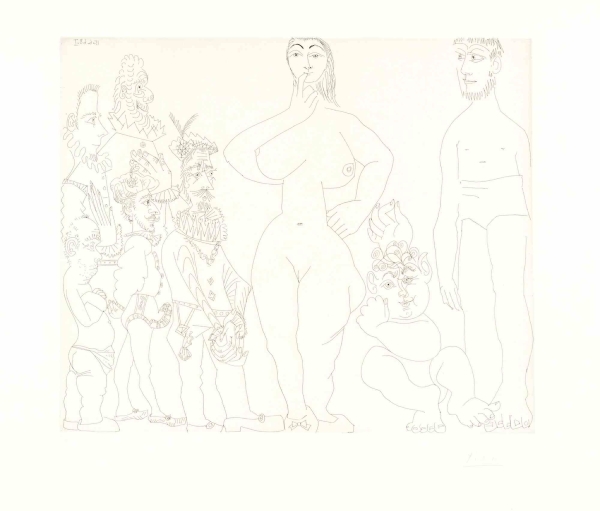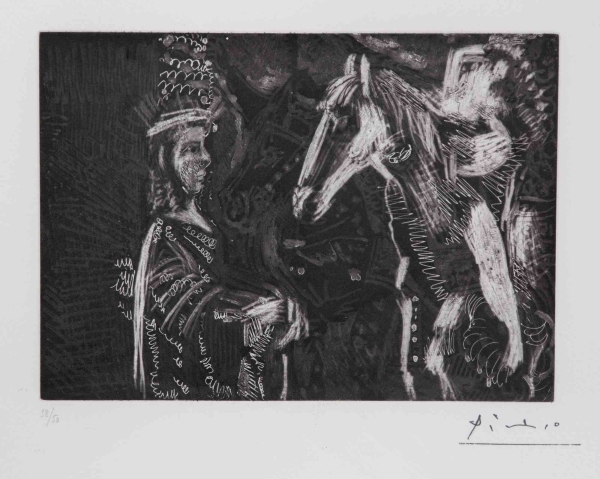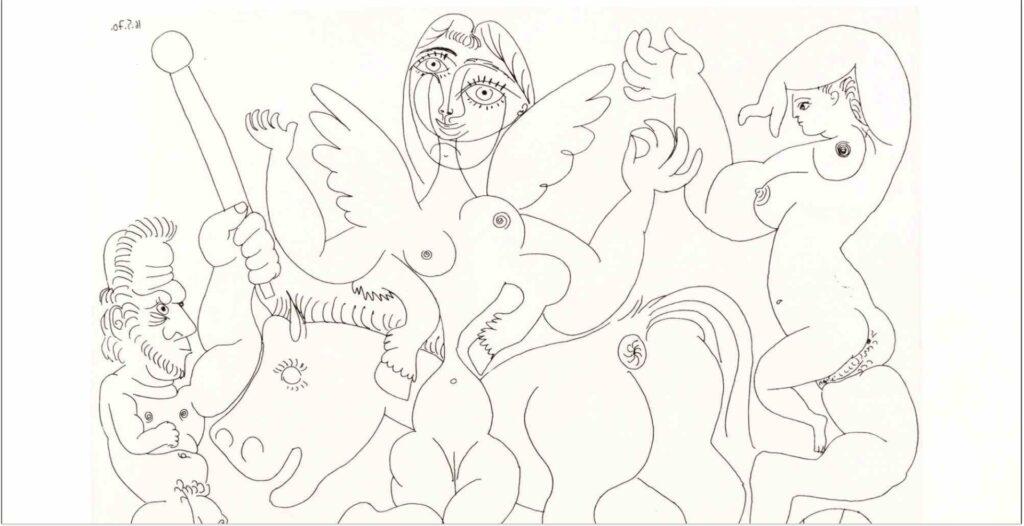
The Eclectic Picasso: A Look into His Iconic Graphic Works
Pablo Picasso was not only one of the most influential artists of the 20th century, but also one of the most prolific. He produced an estimated 50,000 works of art during his lifetime, including paintings, drawings, sculptures, and prints.
While he is best known for his paintings, Picasso’s graphic works are equally impressive and deserve recognition.
Introduction to Picasso’s Graphic Works
Picasso was a pioneer in the field of printmaking, a technique that involves making multiple copies of an artwork by transferring ink from a prepared matrix onto paper or another material. Printmaking was a popular art form in the early 20th century, and Picasso was eager to experiment with its possibilities. He produced more than 2,500 prints during his lifetime, working in a variety of techniques including etching, aquatint, lithography, and linocut.
Picasso’s graphic works are notable for their bold, graphic imagery and expressive lines. He had a unique ability to capture the essence of his subject with just a few strokes of the pen or brush. His prints range in subject matter from landscapes and still lifes to portraits and abstract compositions. They are characterized by a sense of energy and movement, as well as a playful sense of humor. Picasso’s graphic works were highly sought after during his lifetime, and they continue to be popular with collectors today.
Understanding Printmaking as an Art Form
Printmaking is a complex and highly technical art form that requires a great deal of skill and expertise.
One of the most common printmaking techniques used by Picasso was etching. This involves drawing an image onto a metal plate coated with an acid-resistant substance, then immersing the plate in an acid bath. The acid eats away at the exposed metal, creating grooves that will hold ink when the plate is printed. Picasso was a master of this technique, using it to create intricate, detailed images that are full of texture and depth.
Another technique that Picasso frequently used was aquatint. This involves creating a tonal effect by using a fine rosin dust to create a pattern of tiny dots on a metal plate. The plate is then immersed in an acid bath, which eats away at the metal around the dots, creating a series of tiny pits that will hold ink when the plate is printed. Picasso used this technique to create a range of tonal effects, from delicate light and shadow to bold, graphic patterns.
The Significance of Picasso’s Graphic Works
Picasso’s graphic works are significant for several reasons. First, they represent a significant contribution to the field of printmaking. Picasso was a master of the medium, and his prints are notable for their technical skill and innovation. He experimented with a variety of techniques and was always pushing the boundaries of what was possible.
Second, Picasso’s graphic works are significant because they provide a window into his artistic process. Many of his prints are studies for larger works, and they offer a glimpse into his creative process. They also show how his ideas evolved over time, as he experimented with different techniques and subjects.
Finally, Picasso’s graphic works are significant because they are an important part of his overall artistic legacy. While he is best known for his paintings, his prints are equally important and deserve recognition. They represent a significant body of work that showcases his unique artistic vision and technical skill.
The Influence of Picasso’s Graphic Works on Modern Art
Picasso’s graphic works have had a significant influence on modern art. His distinctive style has inspired countless artists over the years, from the Cubists to the Pop artists. His prints have also had an impact on the world of advertising and graphic design, with their eye-catching imagery and playful sense of humor.
One artist who was particularly inspired by Picasso’s graphic works was Andy Warhol. Warhol was a big fan of Picasso’s prints, and he often used them as inspiration for his own work. He was particularly drawn to Picasso’s use of graphic shapes and his sense of humor. Warhol’s own work, with its colors and repetitive imagery, is often compared to Picasso’s prints.
Another artist who was influenced by Picasso’s graphic works was Roy Lichtenstein. Lichtenstein was particularly drawn to Picasso’s use of comic book imagery and graphic lines. He incorporated these elements into his own work, creating a unique style that is instantly recognizable.
Collecting Picasso’s Graphic Works
Picasso’s graphic works are highly sought after by collectors, and they can be found in museums and private collections around the world. Collecting Picasso’s prints can be a rewarding and exciting experience, but it can also be challenging. These works are highly valuable, and they can be difficult to find.

Exhibitions Featuring Picasso’s Graphic Works
Exhibitions featuring Picasso’s graphic works are a great way to learn more about this aspect of his career. These exhibitions showcase a wide variety of works by Picasso and can also provide valuable insights into Picasso’s creative process and the techniques he used to create his prints.
One of the most notable exhibitions featuring Picasso’s graphic works was “Picasso’s Prints: Challenging the Past,” which was held at the National Gallery in London in 2009. This exhibition showcased a wide variety of Picasso’s prints, as well as his paintings and sculptures, and explored his influence on the artists who came after him.
Another notable exhibition featuring Picasso’s prints was “Picasso: Master Printmaker,” which was held at the Museum of Modern Art in New York in 1970. This exhibition focused specifically on Picasso’s printmaking career and showcased more than several of his prints, as well as examples of his matrices and tools.
Conclusion
Picasso’s graphic works are a significant part of his artistic legacy and deserve recognition. They represent a unique contribution to the field of printmaking and offer a window into Picasso’s creative process. They have also had a significant impact on modern art, inspiring countless artists over the years.
Related artworks

Peintre Ramassant Son Pinceau
Pablo Picasso
Etching
6200€
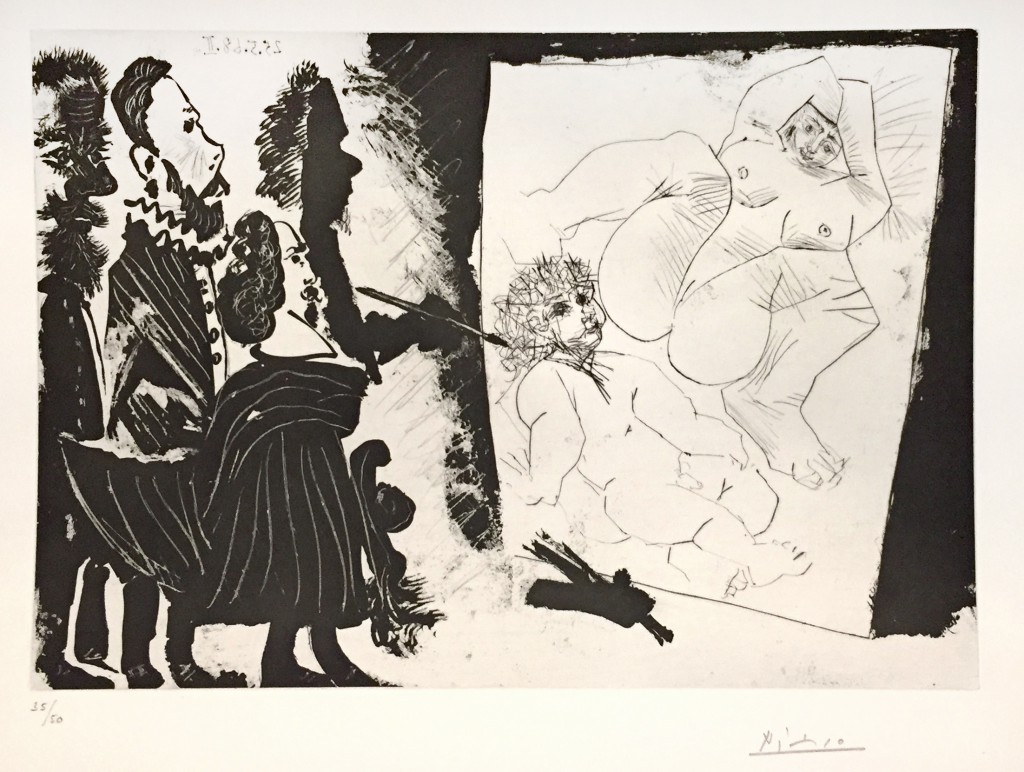
Patron et sa Suite en Visite à l’Atelier
Pablo Picasso
10500€
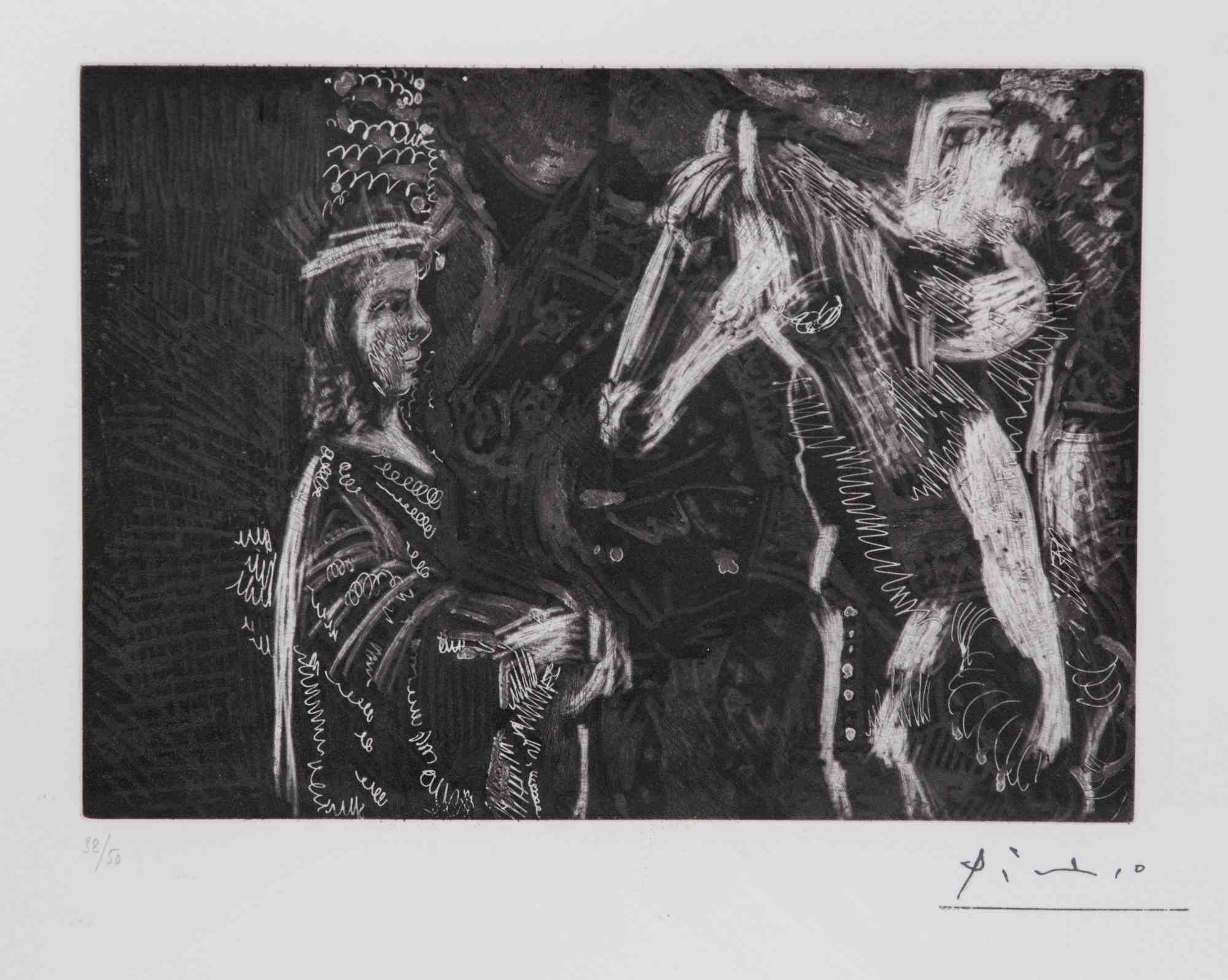
Old Man and Woman Leaning on the Neck of His Horse
Pablo Picasso
4800€
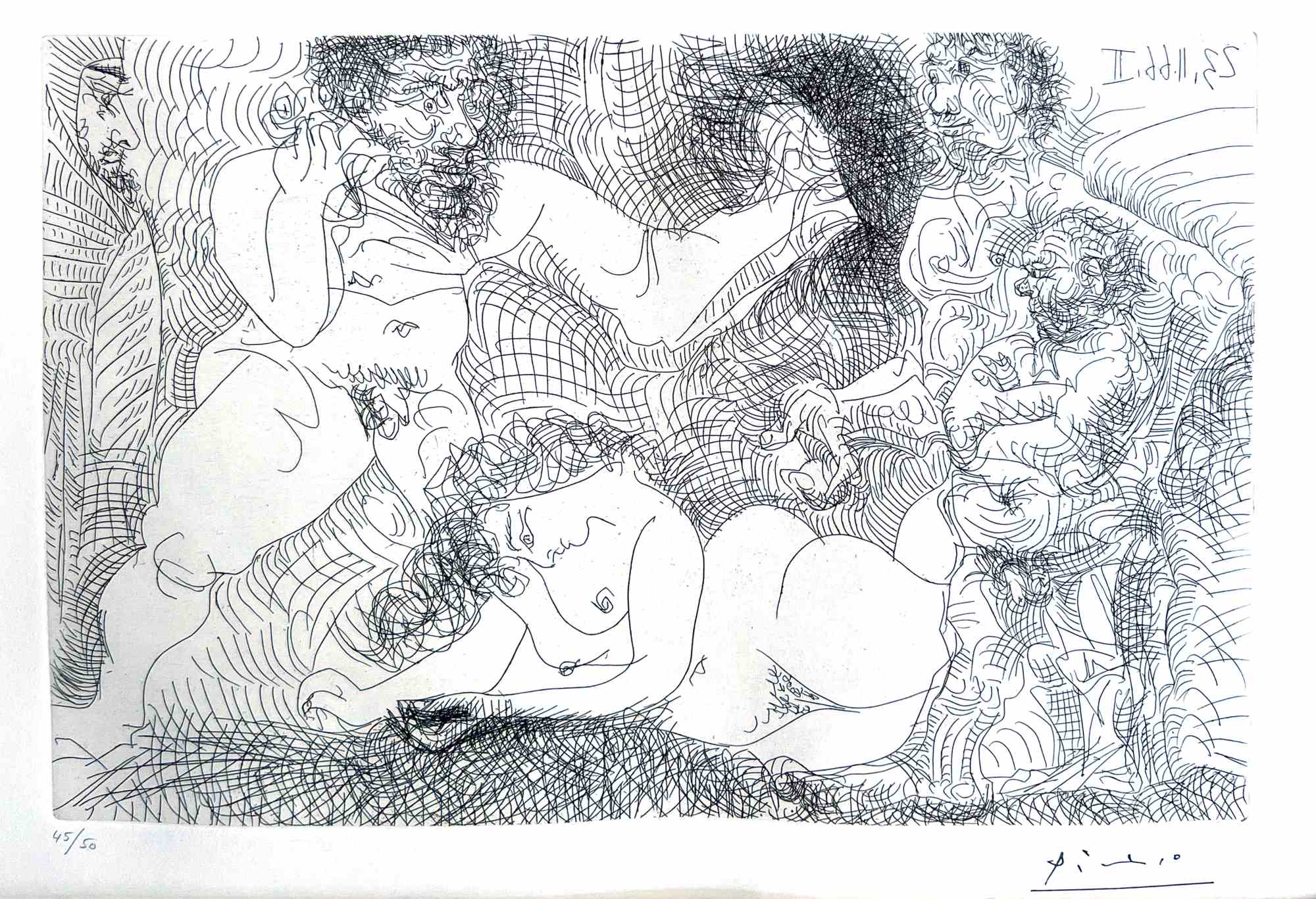
Trois Hommes se Disputant une Femme Devant un Emir
Pablo Picasso
Etching
9000€
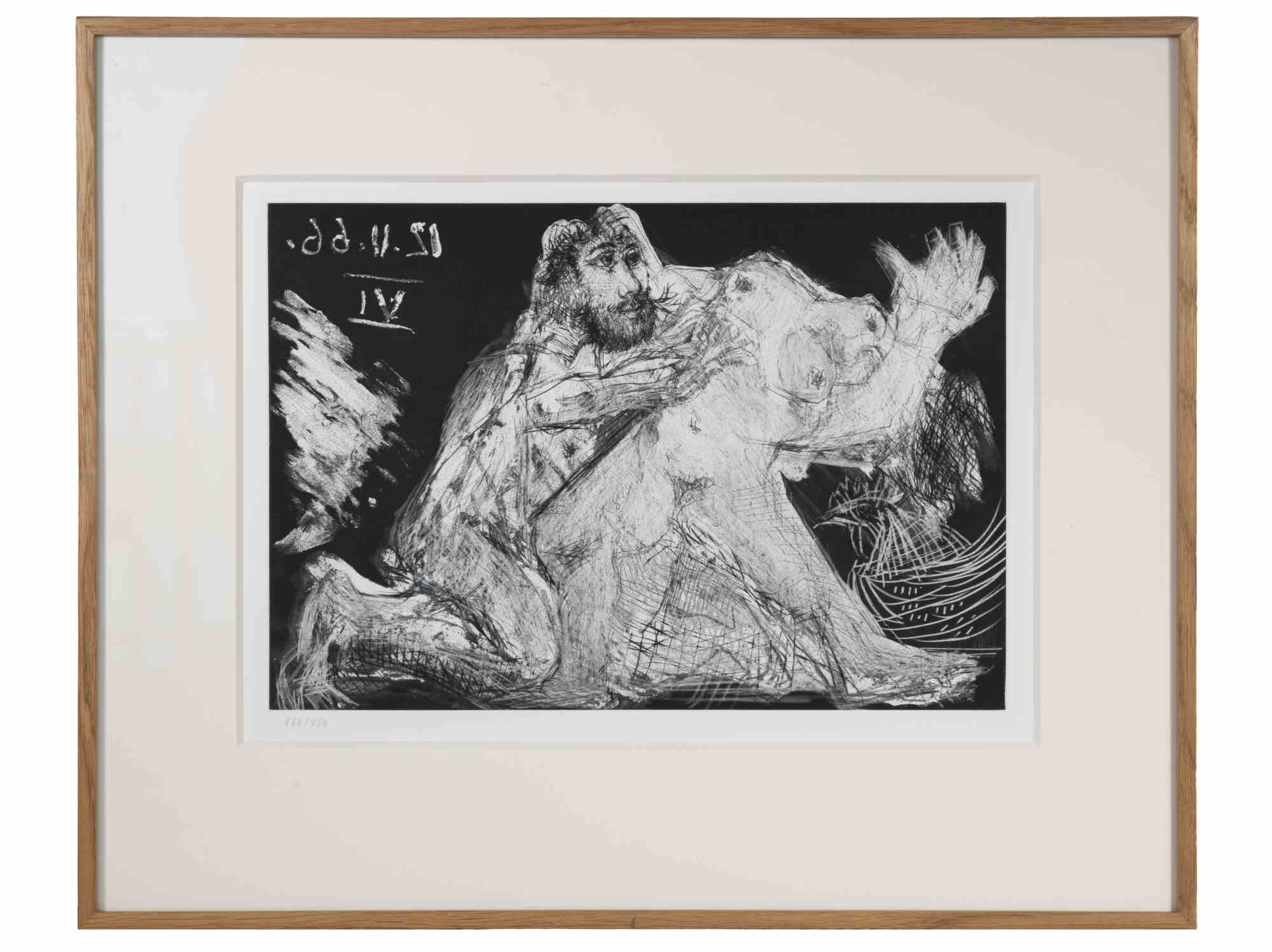
Le Cocu Magnifique
Pablo Picasso
Etching
3200€

10 May 1968
Pablo Picasso
Etching
11250€
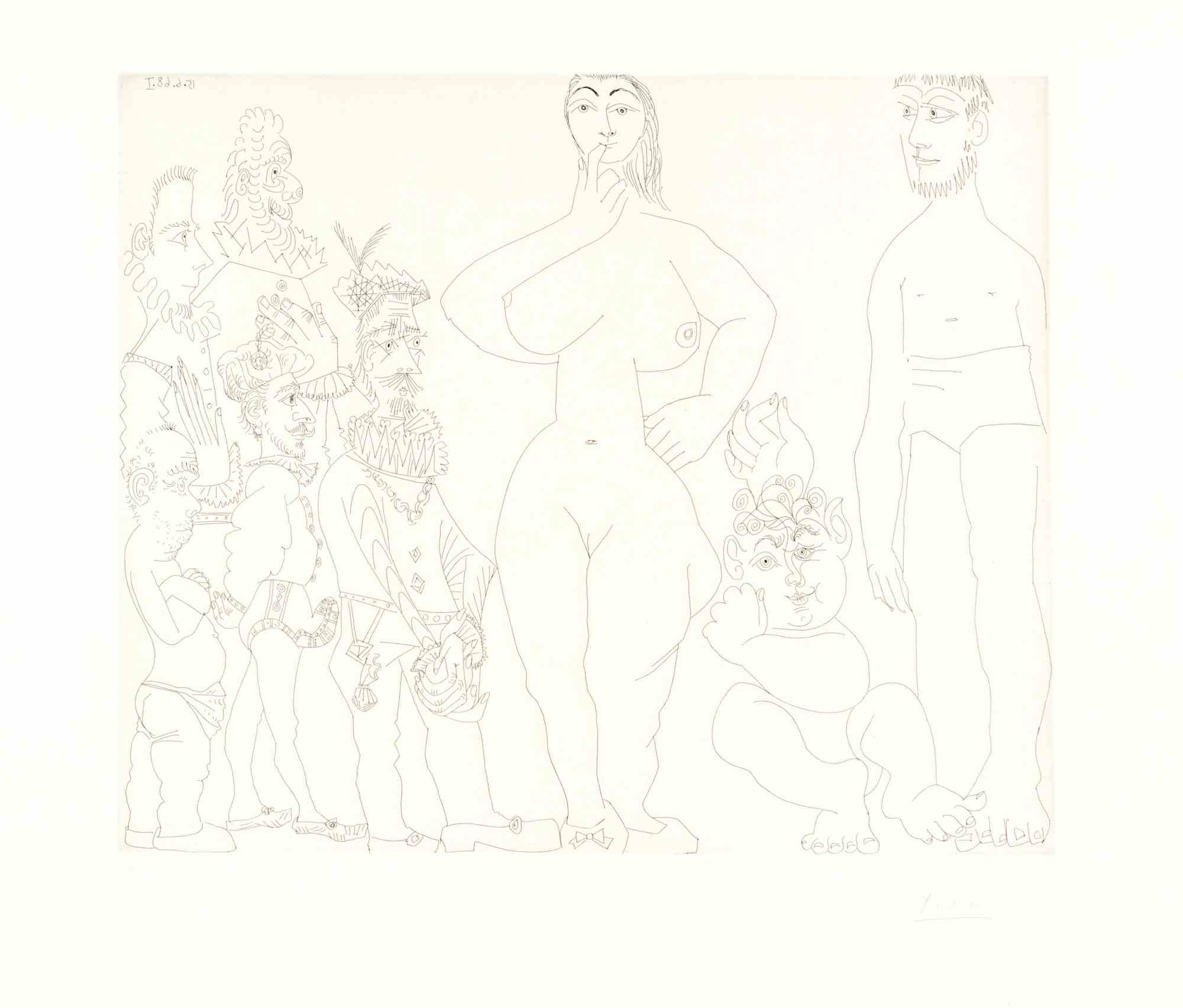
Venus et l'Amour, dans le Style du 17ème Siècle
Pablo Picasso
Etching
14600€
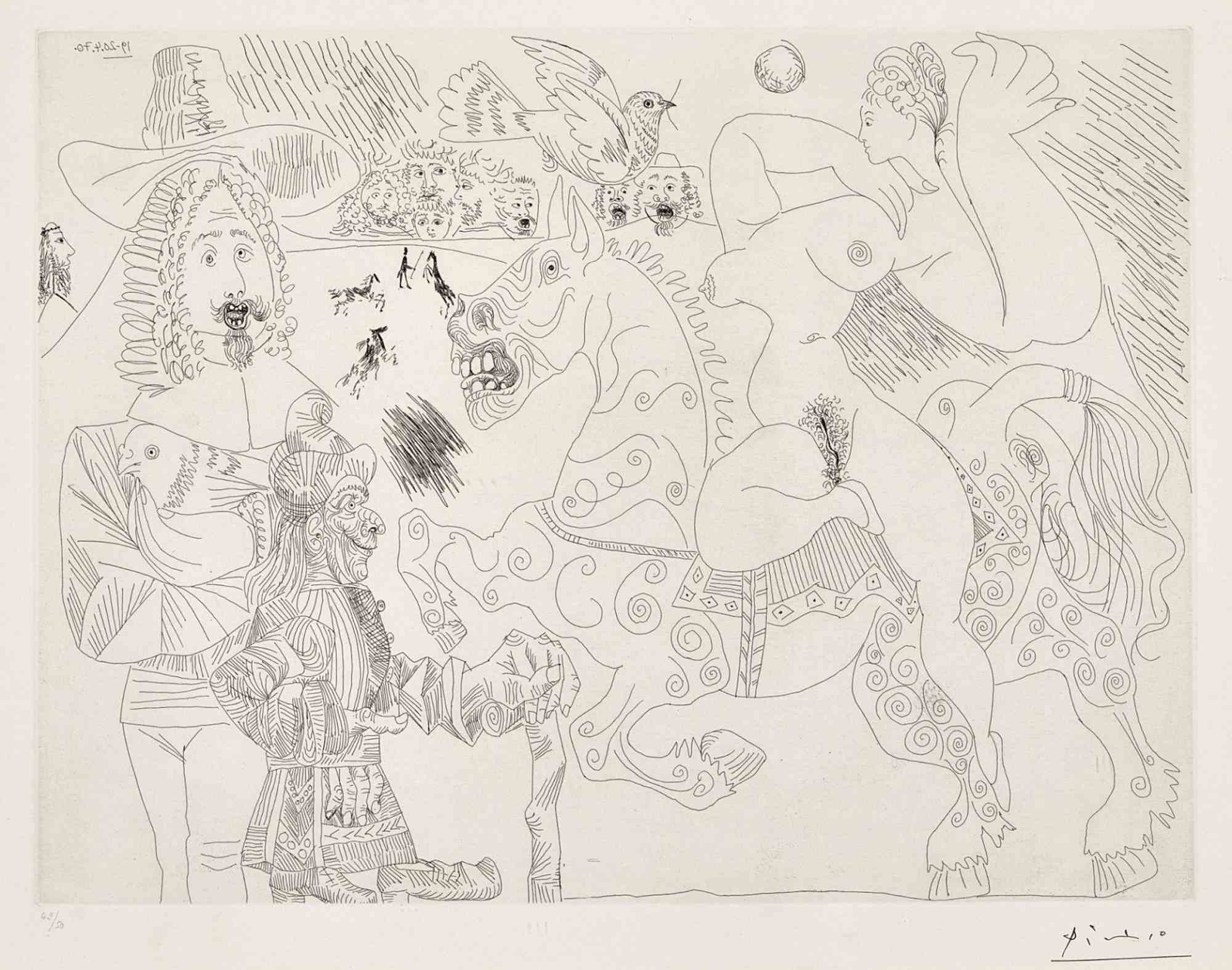
Dressage au Cirque
Pablo Picasso
Etching
9800€
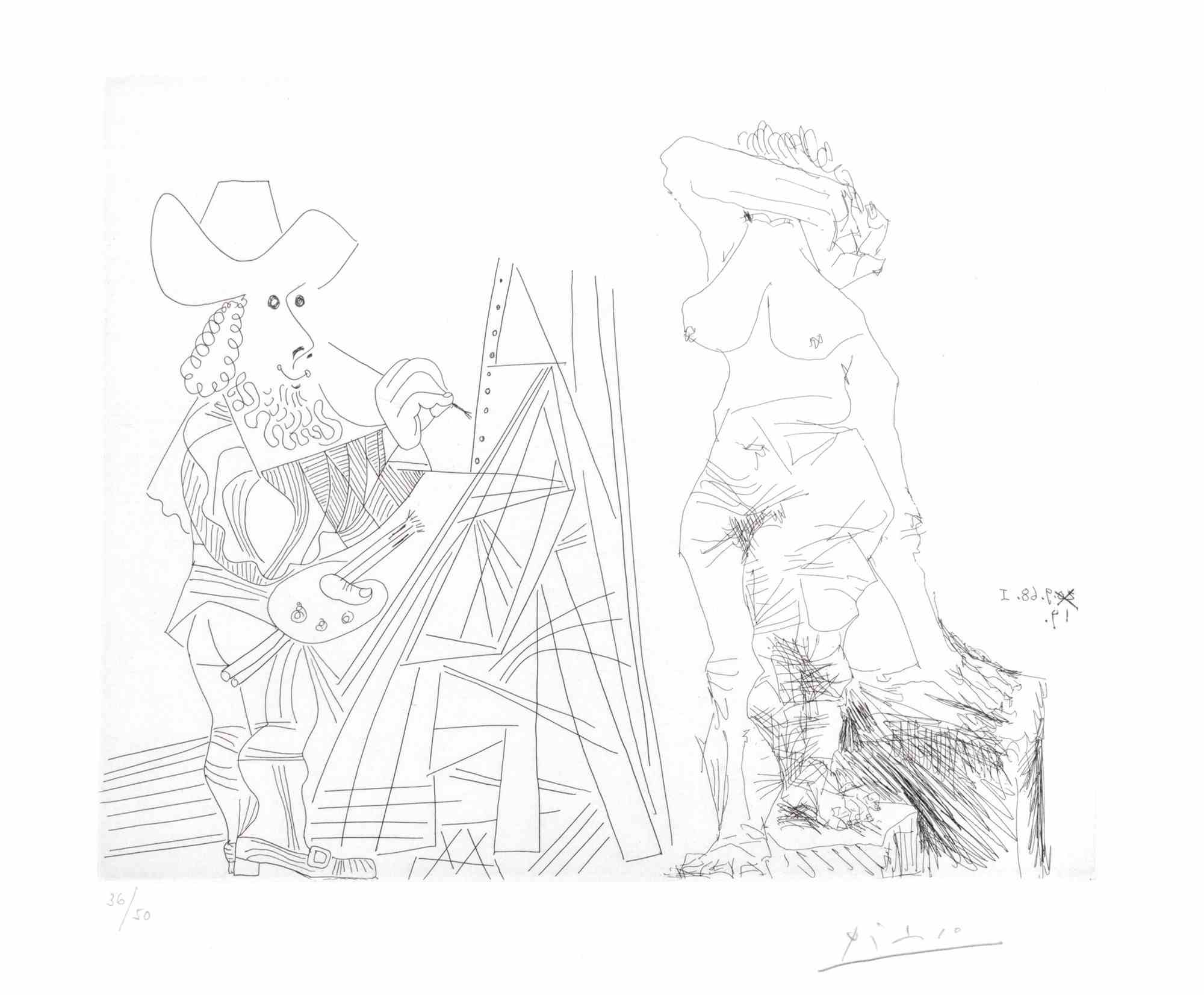
Peintre et Modèle qui se Cache le Visage
Pablo Picasso
Etching
8400€
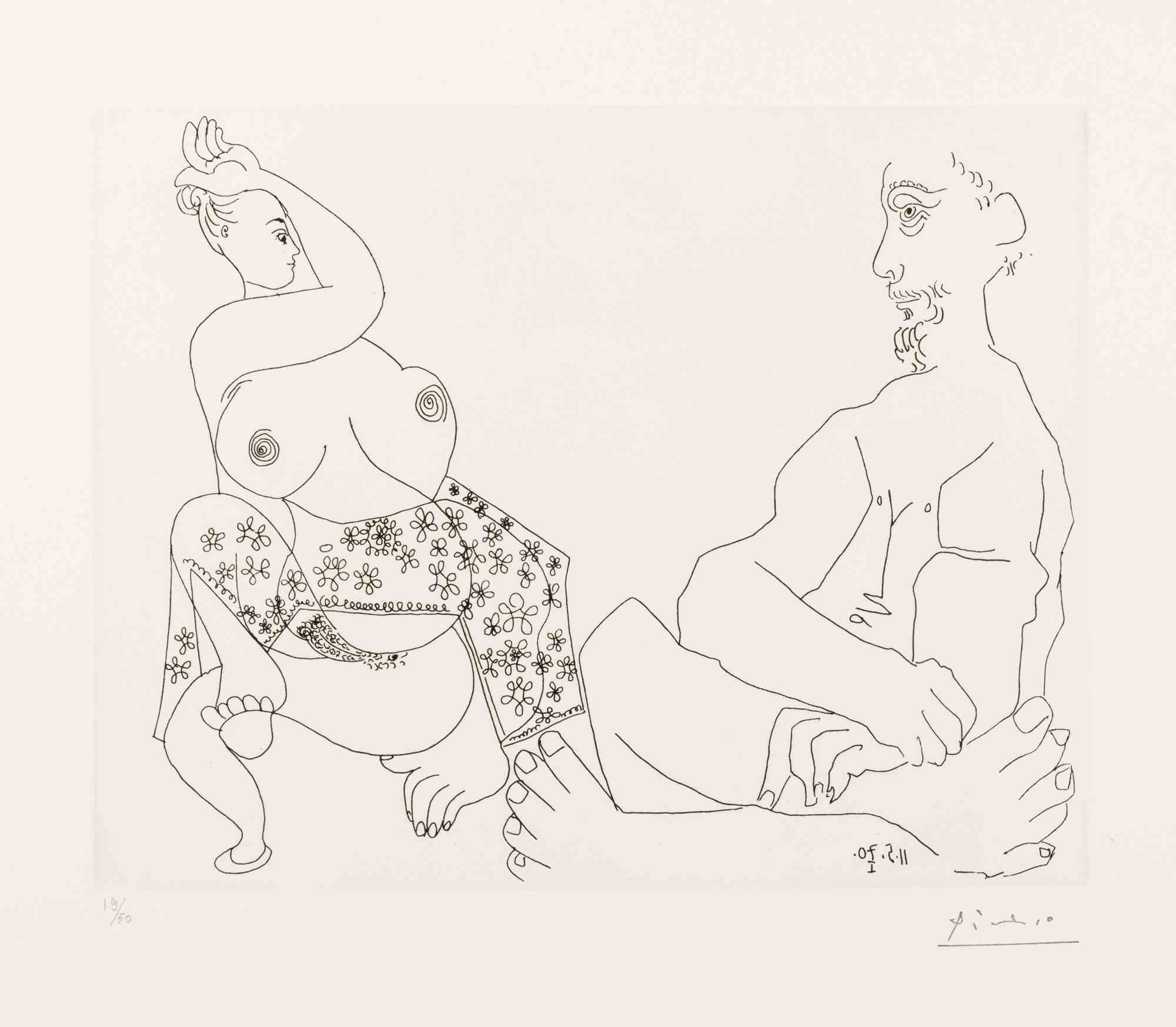
Couple
Pablo Picasso
Etching
4900€
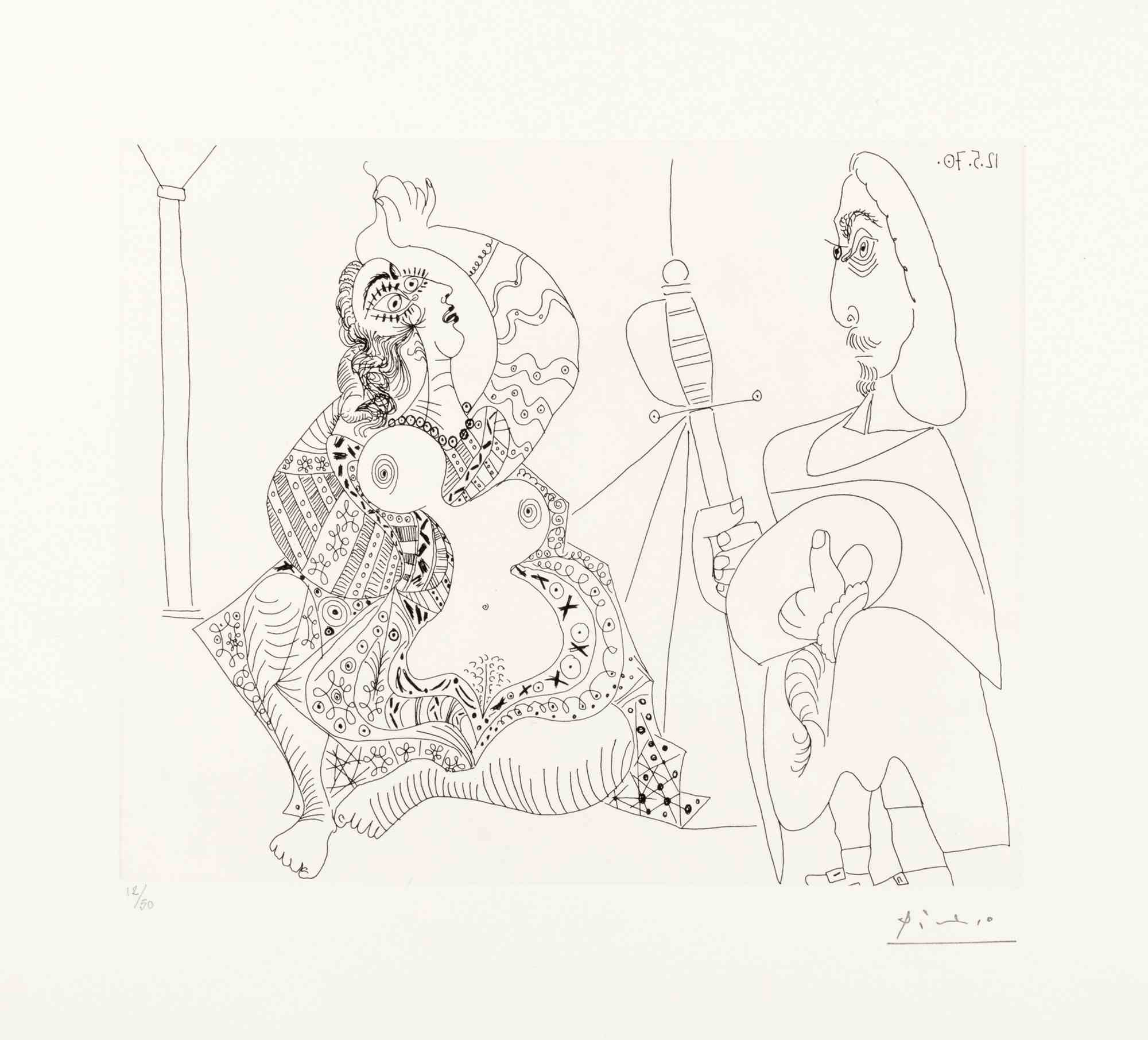
The King and The Queen
Pablo Picasso
Etching
6000€
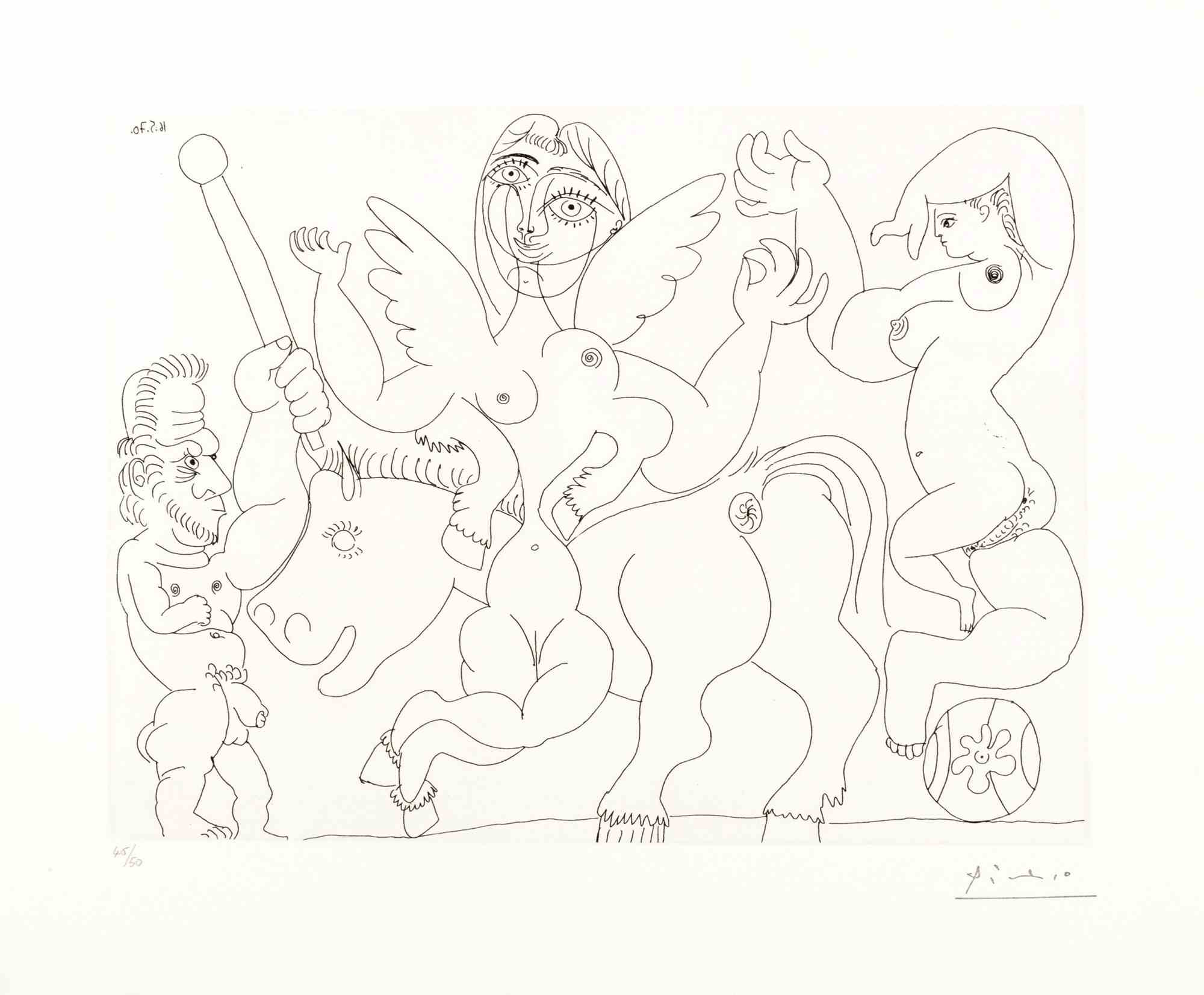
16 Mai 1970
Pablo Picasso
Etching
5800€
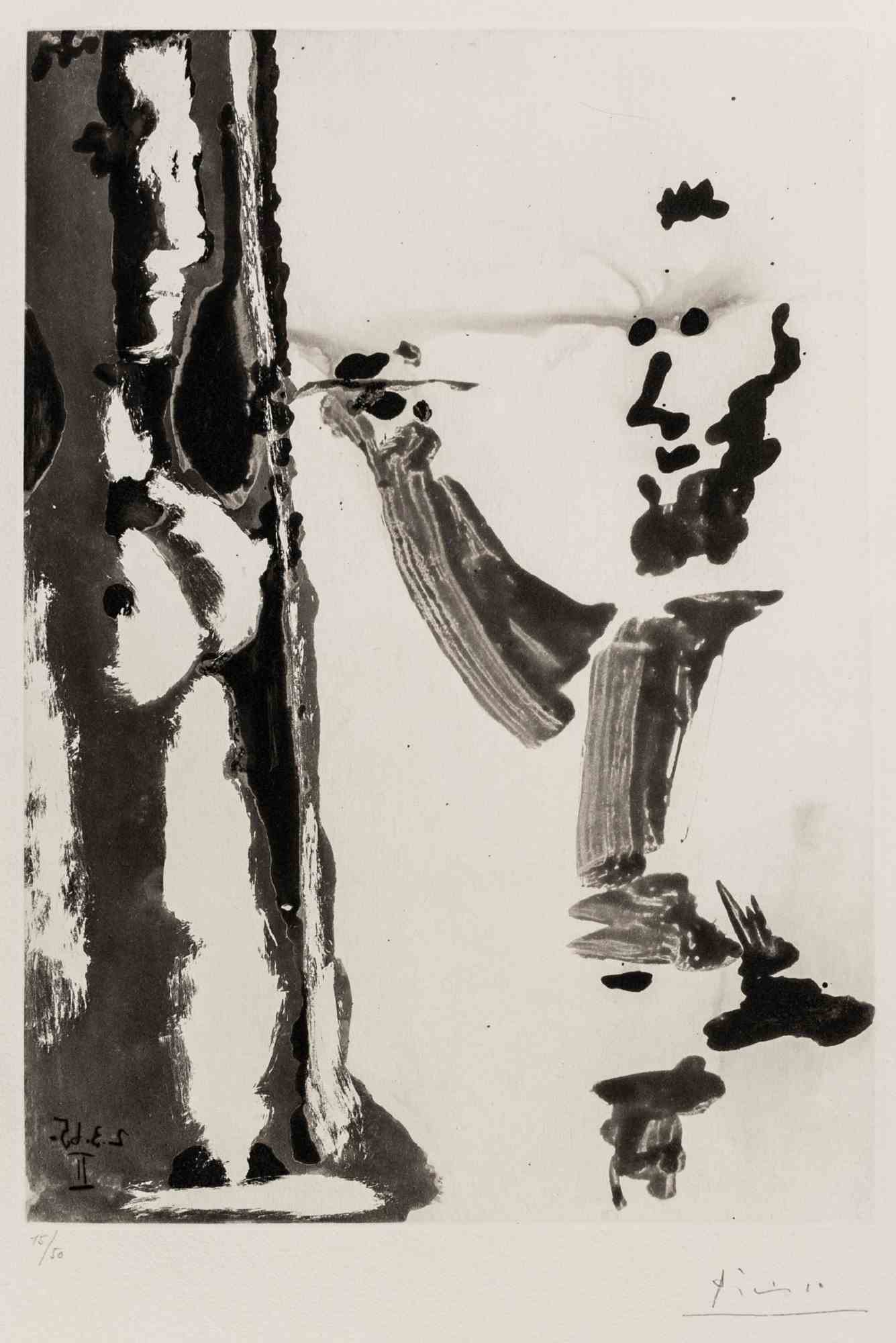
Peintre au Travail
Pablo Picasso
Etching
12700€
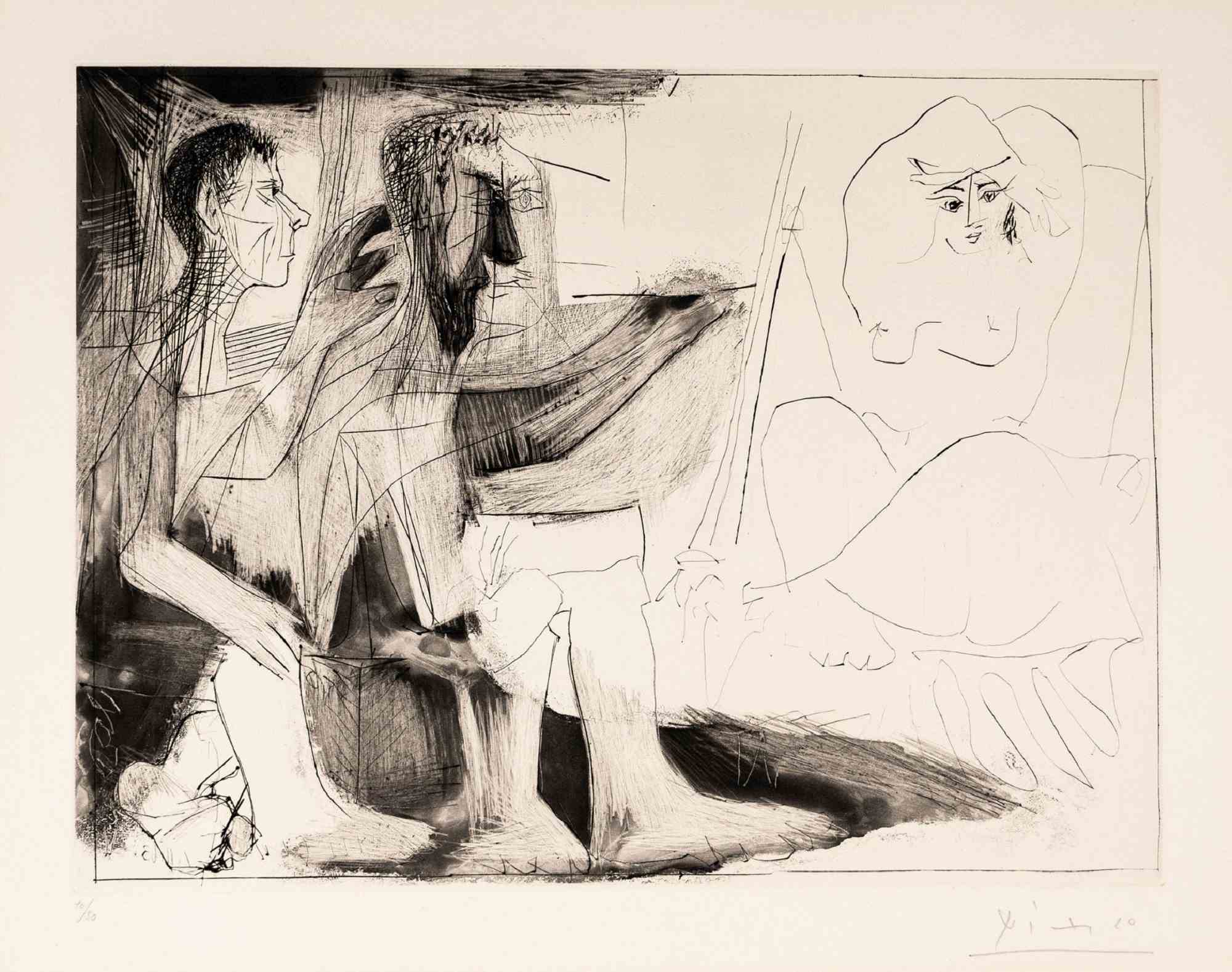
Peintre au Travail
Pablo Picasso
Etching
12700€
